
Medicine is a messy business. As an infectious disease physician, I deal with a multitude of viruses, bacteria, fungi, and other organisms that cause disease. Textbooks describe the classic symptoms of these illnesses. For instance, dengue usually causes fever for about five days, then platelets start to drop two days after the fever goes away. Most people recover. They test positive for dengue NS1, IgM, and eventually IgG most of the time. Occasionally, you’ll get the patient who has only two days of fever, but the platelet count is critically low and all the tests are negative. Still, you are pretty sure it is dengue based on having seen hundreds of these patients and you treat accordingly. This is called a clinical diagnosis.
Clinical diagnosis is an art and a science. You take the disparate parts of a patient’s history, physical examination, and laboratory results and stitch them into a pattern that will tell you what the patient has and how best to treat it.
This is necessary because of two things: The virus never read the textbook and the patient never read the textbook. Medicine and science work on probabilities. For dengue, most patients will have fever, most will have low platelet counts, and most will test positive on the laboratory tests. Some of these, however, will not be present and, in rare cases, may even be contradictory. This is where clinical experience—having seen hundreds of cases and a diversity of patterns— helps doctors decide the best treatment for a patient. Medicine is not a perfect science and therefore what we call the “clinical eye” can mean the difference between getting the correct diagnosis and treatment and missing a crucial diagnosis. It is what makes Filipino doctors, especially those who train at large government hospitals, so exceptional.
この記事は Manila Bulletin の August 25, 2020 版に掲載されています。
7 日間の Magzter GOLD 無料トライアルを開始して、何千もの厳選されたプレミアム ストーリー、9,000 以上の雑誌や新聞にアクセスしてください。
すでに購読者です ? サインイン
この記事は Manila Bulletin の August 25, 2020 版に掲載されています。
7 日間の Magzter GOLD 無料トライアルを開始して、何千もの厳選されたプレミアム ストーリー、9,000 以上の雑誌や新聞にアクセスしてください。
すでに購読者です? サインイン
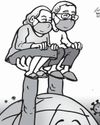
Taking care of older persons is the collective concern of the citizenry
The International Day of Older Persons is observed on Oct. 1 each year.

Promoting safe driving in the new normal
Ford Driving Skills for Life
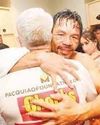
ON MANNY PACQUIAO - You're the greatest – Roach
From one legend to another.

NAT'L BASKETBALL ASSOCIATION - PAY CUTS FOR NO VAX PLAYERS
NBA poises crackdown on those who refuse to get vaccinated

Duterte renews commitment to infra dev't
With only months left in his term, President Duterte reassured the public that his administration remains committed to its promise of infrastructure development aimed at making the Philippines a progressive nation.
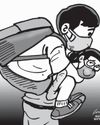
Sustain Our Teachers' Enthusiasm; Enable Young Learners To Hurdle The Learning Crisis
For 10 years now, the period from Sept. 5 to Oct. 5 of every year has been observed as National Teachers Month (NTM), by virtue of President Benigno S. Aquino III’s Proclamation No. 242. The observance culminates on Oct. 5 that, by virtue of Republic Act 10743, is observed as World Teachers Day (WTD) and National Teachers Day (NTD) pursuant to a UNESCO mandate.
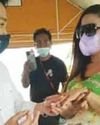
Love knows no borders
Pangasinense couple weds at checkpoint

The Next Election Is No Waste Of Time
An appeal to the young who can influence the outcome of the upcoming elections

US Olympian Biles Says She Should've Quit Earlier
Gymnastics
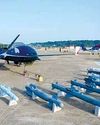
Drones And Jets: China Shows Off New Air Power
ZHUHAI, China (AFP) — China on Tuesday showed off its increasingly sophisticated airpower including surveillance drones and jets able to jam hostile electronic equipment, with an eye on disputed territories from Taiwan to the South China Sea and rivalry with the United States.